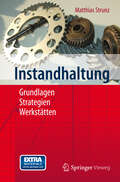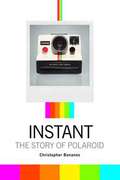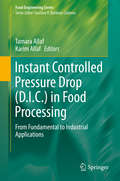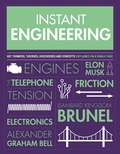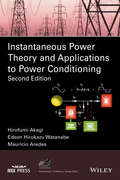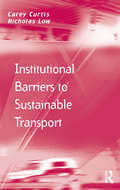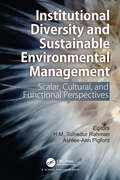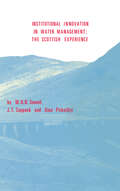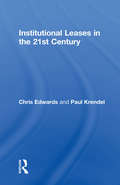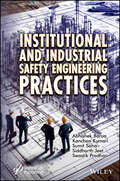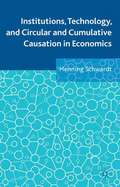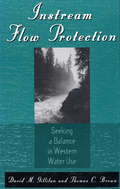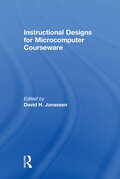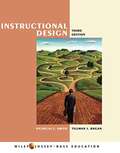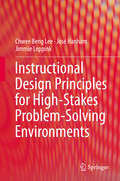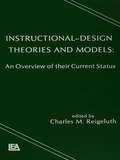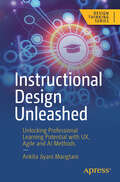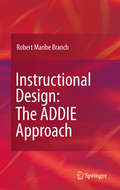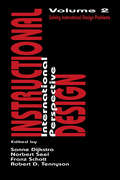- Table View
- List View
Instagram: 60 Ways to Get More Followers on Instagram and Monetize Them
by Marketing Mastery<p>Discover How To Skyrocket Your Instagram Business ! <p>Instagram is one of the most popular platforms for people to advertise whatever they like; whether it is a new shoe they got or just a random scene of nature, everybody uses Instagram to showcase their photography skills. Instagram works in a very simple manner. To get started on using it, all you need to do is to download and install the application, sign in with your details and get going. Your popularity on Instagram depends on how many followers you have. The higher the number of followers, the higher number of likes you can get on Instagram. Aside from the fact that you can use Instagram for posting pictures, you can even use Instagram to make money online. As mentioned earlier, Instagram is all about the amount of followers you have. Therefore, it is better to work as much as you can in order to improve your ranking on Instagram. This can be done by getting more followers there. </p>
Install Your Own Solar Panels: Designing and Installing a Photovoltaic System to Power Your Home
by Philip Schmidt Joseph BurdickLabor and related costs account for more than half of the price of the average home solar installation. But homeowners can save thousands of dollars with this user-friendly manual, which follows the same process professional contractors use. Through detailed directions and step-by-step photos, veteran solar installer Joseph Burdick and seasoned builder Philip Schmidt teach you how to determine the size, placement, and type of installation you’ll need. This comprehensive DIY guide covers everything from assembling rooftop racking or building a ground-mount structure to setting up the electrical connections and making a battery bank for off-grid systems.
Installation Methods of Offshore Oil-Gas Well Conductor
by Jin YangThe oil–gas conductor is the key part that connects subsea facilities and offshore equipment. The installation, construction and the stability control in subsequent operation of the conductor are main technical problems in the field of offshore oil and gas engineering. The book focuses on installation of oil and gas conductor in the offshore oil field. It includes three parts. The first part introduces the main installations and structural features of the wellhead above water and the wellhead under water. Then, it summarizes methods and theories of oil and gas conductor design. Finally, the differences in the construction techniques and supporting equipment of the three oil and gas well conductor installation methods are systematically described. This book contains a complete set of equipment, construction process and design methods for oil and gas conductor installation with multidisciplinary knowledge of geotechnical engineering, civil engineering, and structural dynamics. Scientific researchers and college students engaged in marine oil and gas engineering, petroleum engineering, marine engineering will find this book as a valuable reference.
Instandhaltung
by Matthias StrunzIn dem Lehrbuch werden die Grundlagen der Instandhaltung und verschiedene Aspekte der Schädigungstheorie vermittelt. Nach einer Einführung in Arbeitssicherheit und Umweltverträglichkeit als wesentliche Instandhaltungsziele behandelt der Autor die Zuverlässigkeitstheorie. Die Entwicklung von Instandhaltungsmodellen und die Funktionsbestimmung, Dimensionierung und Strukturierung von Instandhaltungswerkstätten sind ein weiterer Schwerpunkt. Viele Beispiele illustrieren die theoretischen Zusammenhänge, zudem enthält der Band Übungsaufgaben mit Lösungen.
Instant
by Christopher Bonanos"Pictures in a minute!" In the 1950s, '60s, and '70s, Polaroid was the hottest technology company on Earth. They were an innovation machine that cranked out one irresistible product after another. It was even the company after which Steve Jobs is said to have modeled Apple, and the comparison is true. Jobs's hero, Edwin Land, Polaroid's visionary founder, turned his 1937 garage startup into a billion-dollar pop-culture phenomenon. Instant: The Story of Polaroid, a richly illustrated, behind-the-scenes look at the company, tells the tale of Land's extraordinary and beloved invention. From the introduction of Polaroid's first instant camera in 1948 to its meteoric rise and dramatic collapse into bankruptcy in the 2000s, Instant is both a cautionary tale about tech companies that lose their edge and a remarkable story of American ingenuity. Written in a breezy, accessible tone by New York magazine senior editor Chris Bonanos, this first book-length history of Polaroid also features colorful illustrations from Polaroid's history, including the company's iconic branding and marketing efforts.
Instant Controlled Pressure Drop (D.I.C.) in Food Processing
by Tamara Allaf Karim AllafThe use of Instant Controlled Pressure Drop (D. I. C. ) in food processing operations is relatively new when compared with other conventional or innovative technologies. In addition to existing applications such as drying, texturing and decontamination, D. I. C. technology has been shown to be highly appropriate for an ever-growing number of uses and with a wide range of raw materials. Some examples are post-harvesting and drying of fruits and vegetables; cereal steaming; extraction of essential oils and active molecules, where D. I. C. may be combined with supercritical fluids, ultrasound or microwaves; and the hydrolysis of cellulose and the transesterification of lipids. This book presents a complete picture of current knowledge on the use of D. I. C. in food processing, preservation and extraction. It provides a comprehensive compilation, summarizing the fundamentals of D. I. C. technology, current developments, new research findings, safety precautions and environmental impacts. It will also contribute to widening the scope of D. I. C. technology through the inclusion of some much-needed examples of industrial applications. Each chapter of the book is complementary to the other chapters. They all are based on presentations of reputed international researchers and address the latest progress in the field. Professor Karim ALLAF heads a research team working on the intensification of eco-processes at La Rochelle University. He is a physicist and an expert in the thermodynamics of "instantaneity". Dr. Tamara ALLAF is the R&D manager of ABCAR-DIC Process Company. A chemical engineer, she obtained her Ph. D. in innovative extraction processes.
Instant Engineering: Key Thinkers, Theories, Discoveries and Inventions Explained on a Single Page (Instant Knowledge)
by Joel LevyKey thinkers, theories, discoveries, and inventions explained on a single page! Instant Engineering pulls together all the pivotal engineering theories and discoveries into one concise volume. Each page contains a distinct “cheat sheet,” which tells you the most important facts in bite-size chunks, so you can feel like an expert in minutes! From Archimedes to Elon Musk, from pumps and pulleys to the steam engine, and from the canal boat to the space rocket—every key figure, theory, or term is expressed in succinct and lively text and graphics. Perfect for the knowledge-hungry and time-poor, this collection of graphics-led lessons makes engineering interesting and accessible. Everything you need to know—and more!—packed into one convenient volume.
Instantaneous Power Theory and Applications to Power Conditioning (Second Edition)
by Edson Hirokazu Watanabe Hirofumi Akagi Mauricio AredesThis book covers instantaneous power theory as well as the importance of design of shunt, series, and combined shunt-series power active filters and hybrid passive-active power filters. Illustrates pioneering applications of the p-q theory to power conditioning, which highlights distinct differences from conventional theories. Explores p-q-r theory to give a new method of analyzing the different powers in a three-phase circuit. Provides exercises at the end of many chapters that are unique to the second edition.
Institutional Barriers to Sustainable Transport (Transport And Mobility Ser.)
by Nicholas Low Carey CurtisIn a world seeking to tackle global environmental problems such as climate change, the importance of local and national institutional change to deal most effectively with these issues is critical. This book presents an investigation of the institutional barriers preventing the development of a new vision for urban transport compatible with these realities and in those terms 'sustainable'. Through an examination of transport planning in Australia, the book challenges conventional wisdom by showing, through original research, how 'car dependence' is as much an institutional as a technical phenomenon. The authors' case studies in three metropolitan cities show how transport policy has become institutionally fixated on a path dominated by private, road-based transport and how policy systems become encrusted around investment to accommodate private cars, erecting an impenetrable barrier against more sustainable mobility and accessibility solutions. Representing a new approach to understanding transport policy, this book brings sophisticated political-institutional analysis to what has traditionally been the domain of engineering and technology. The authors connect the empirical content to this theory and the issue of sustainability making the findings applicable to most cities of the developed world, and to fields beyond transport planning. A strategy and program of action is outlined to take advantage of changing public perceptions and aimed at creating a new vision for urban transport.
Institutional Diversity and Sustainable Environmental Management: Scalar, Cultural, and Functional Perspectives
by H.M. Tuihedur Rahman Ashlee-Ann PigfordCoordinated, well-functioning institutions are crucial for tackling environmental challenges like climate change, pollution, biodiversity loss, and resource overuse. This book presents case studies from around the world to showcase how different socio-political institutions interact to influence environmental management outcomes in complex, polycentric institutional settings. Collectively, the cases emphasize the importance of unpacking interactional complexity through an improved understanding of cross-scalar, cross-cultural, and cross-functional institutional interactions. By encouraging practitioners to reflect on these three dimensions, this book identifies key considerations for designing innovative institutional coordination mechanisms in support of sustainable environmental management.
Institutional Innovation in Water Management: The Scottish Experience
by J. T. Coppock W. R. D. Sewell Alan PitkethlyWater supply is high on the international political agenda. This study, using the Scottish experience as an examplar, shows that institutional innovation is as important if not more so than improved technology in providing water for a growing world population.
Institutional Leases in the 21st Century
by Chris Edwards Paul KrendelSince the 1980s the "institutional" lease has undergone a dramatic transformation. Landlord-orientated FRI leases for a term of twenty-five years with no breaks and upwards-only rent reviews have retreated before market demands for shorter, more flexible letting arrangements and, recently, in the face of threatened legislation. Nevertheless, valuers and lawyers will have to understand and deal with the 1980s leases until well into the second decade of the twnety-first century.The book sets out to explain the main changes that have occurred since the early 1990s (such as the rules relating to privity of contract). It also provides guidance on the factors driving further change, including the Code of Practice for Commercial Leases and the proposed new accounting standards.
Institutional and Industrial Safety Engineering Practices
by Kanchan Kumari Abhishek Barua Siddharth Jeet Sumit Saha Swastik PradhanThis book is essential for anyone working in laboratories or workshops, as it provides crucial insights into safety measures, accident management, and first-aid procedures that are often lacking in institutional guidelines. Most institutions lack a collective manual or guidelines that inform individuals working in laboratories or workshops about safety precautions or how to deal with accidents that occur on the premises. This leaves a gap that may result in fatalities or collateral damage. Institutional and Industrial Safety Engineering Practices will provide insight into the safety measures that should be followed for the proper functioning of laboratories and workshops present in an institution. It will also help readers deal with any accident or fire hazard occurring on the premises and provide steps for first aid. After reading this book, readers will be able to comprehend the ideas and challenges linked to industrial safety, the incorporation of safety at the design stage to improve safety performance, and the analysis, prediction, and reduction of risks via the use of analytics and safety management. This book will also include safety key performance indicators used in various industries, which will assist readers in taking preventative measures at their workplace to avoid accidents. The rules of occupational safety and health management, which are responsible for preserving worker health and safety, are also covered.
Institutions, Innovations, and Growth
by Haizhou Huang Chenggang XuA report from the International Monetary Fund.
Institutions, Technology, and Circular and Cumulative Causation in Economics
by Henning SchwardtThe book investigates the relation between technology and institutions and their mutual influence during processes of development and change and illustrates this on the development process in Argentina after 1946. General and case-study specific policy recommendations are offered.
Instream Flow Protection: Seeking A Balance In Western Water Use
by Thomas C. Brown David M. GillilanInstream Flow Protection is a comprehensive overview of Western water use and the issues that surround it. The authors explain instream flow and its historical, political, and legal context; describe current instream flow laws and policies; and present methods of protecting instream flow. They provide numerous examples to illustrate their discussions, with case studies of major river systems including the Bitterroot, Clark's Fork, Colorado, Columbia, Mimbres, Mono Lake, Platte, Snake, and Wind.Policymakers, land and water managers at local, state, and federal levels, attorneys, students and researchers of water issues, and anyone concerned with instream flow protection will find the book enormously valuable.
Instruction Design for Microcomputing Software
by David H. JonassenSelected as one of the outstanding instructional development books in 1989 by the Association for Educational Communications and Technology, this volume presents research in instructional design theory as it applies to microcomputer courseware. It includes recommendations -- made by a distinguished group of instructional designers -- for creating courseware to suit the interactive nature of today's technology. Principles of instructional design are offered as a solid base from which to develop more effective programs for this new method of teaching -- and learning.
Instructional Design
by Patricia L. Smith Tillman J. RaganA well-documented, theory-based treatment that focuses on instructional design’s application to industry and K-12 education. Offers extensive procedural assistance, emphasizing the foundations and first principles upon which most of the models and procedures in the field are built. An Extended Example (now online) showcases applications of concepts and techniques using a single subject area and course (Digital Photography).
Instructional Design Principles for High-Stakes Problem-Solving Environments
by Chwee Beng Lee José Hanham Jimmie LeppinkThis book examines the types of problems and constraints faced by specialists in the areas of security, medicine, mental health, aviation and engineering. Every day we rely on highly trained specialists to solve complex problems in high-stakes environments, that is, environments involving direct threats to the preservation of human life. While previous work has tended to focus on problem solving in a single domain, this book covers multiple, related domains. It is divided into three parts, the first of which addresses the theoretical foundations, with coverage of theories of instructional design and expertise. Part two covers the five high-stakes domains and offers directions for training in these domains. In turn, part three provides practical guidelines for instructional design in high-stakes professions, including learner analysis, task analysis, assessment and evaluation. The book is intended for a broad readership, including those who operate in high-stress, time-pressure occupations. Trainers at professional organisations can utilise the theoretical frameworks and training strategies discussed in this book when preparing their clients for complex, real-world problem solving. Further, the book offers a valuable resource for academics and graduate students, as well as anyone with an interest in problem solving.
Instructional Design Theories and Models: An Overview of Their Current Status
by Charles M. ReigeluthInstructional Design Theories and Models is a thorough yet concise overview of eight of the most comprehensive and best-known attempts to integrate knowledge about effective and appealing instruction. Chapters were written by the original theorists to provide a more accurate and behind-the-scenes look at the theories' development. Instructional Des
Instructional Design Unleashed: Unlocking Professional Learning Potential with UX, Agile and AI Methods (Design Thinking)
by Ankita Jiyani MangtaniDive into the expansive realm of instructional design and explore a rich tapestry of effective strategies and practical techniques. This comprehensive guide is a treasure trove of insights bridging the theoretical foundations of instructional design with hands-on, actionable methods to elevate learning experiences. After reviewing the fundamentals, you’ll unravel the essence of instructional design, what it entails, and how its principles can be harnessed. Your journey then delves into the scientific underpinnings of learning in professional settings, dissecting pivotal concepts such as cognitive load, cognitive load theory (CLT), learning styles, and modalities. The guide extends its reach to address inclusivity, promoting equitable practices, and mitigating unconscious bias during the design of learning courses and environments. With a solid foundation in place, you’ll examine key frameworks specific to learning and instructional design, including the tried-and-true methodologies of ADDIE, SAM, and ARCS. Going beyond the conventional, the guide widens its lens to incorporate broader methodologies, such as user-experience (UX), Agile methodologies, storyboarding, and gamification, all prevalent in the tech industry. It also delves into virtual learning environments and the nuances of creating effective online learning experiences and contemplates the revolutionary impact of generative AI on reshaping this space. With a forward-looking perspective, Instructional Design Unleashed anticipates and navigates the potential changes and innovations that AI can introduce, positioning instructional designers at the forefront of the evolving landscape of educational technology. What You’ll Learn Uncover the scientific foundations of learning and their seamless integration into the learning experience. Explore practical methodologies and techniques that can be readily applied to enhance your learning projects. Study the vast potential of generative AI within the realms of e-learning and virtual learning environments. Unlock the innovative possibilities for the future of educational technology. Who This Book Is For Instructional designers, eLearning developers, educators, trainers, app developers, UX designers, and anyone involved in creating effective learning experiences.
Instructional Design with Emerging Technologies: Theory, Practice, and Research
by Heng LuoBridging the gap between instructional design (ID) theory and practice in today's technology-enhanced learning environments, the book extends the current understanding of instructional science with an up-to-date perspective on emerging technologies and their affordances for teaching and learning.Positioning ID as a systematic process informed by theoretical assumptions, empirical evidence, and pragmatic considerations, this book provides an in-depth description and reflective analysis of good practice in technology-enhanced learning and design with a tripartite framework of pedagogy, technology, and evidence. It covers well-established ID theories and models with real-life examples of their effective integration with technological innovations. The book aims to advance the understanding of ID from both pedagogical and technological perspectives to improve educational practice and theory development in the information age.The book will be of interest to students and academics in educational technology, instructional science, and instructional design, as well as instructional designers and teachers.
Instructional Design: The ADDIE Approach
by Robert Maribe BranchThe Analyze, Design, Develop, Implement, and Evaluate (ADDIE) process is used to introduce an approach to instruction design that has a proven record of success. Instructional Design: The ADDIE Approach is intended to serve as an overview of the ADDIE concept. The primary rationale for this book is to respond to the need for an instruction design primer that addresses the current proliferation of complex educational development models, particularly non-traditional approaches to learning, multimedia development and online learning environments. Many entry level instructional designers and students enrolled in related academic programs indicate they are better prepared to accomplish the challenging work of creating effective training and education materials after they have a thorough understanding of the ADDIE principles. However, a survey of instructional development applications indicate that the overwhelming majority of instructional design models are based on ADDIE, often do not present the ADDIE origins as part of their content, and are poorly applied by people unfamiliar with the ADDIE paradigm. The purpose of this book is to focus on fundamental ADDIE principles, written with a minimum of professional jargon. This is not an attempt to debate scholars or other educational professionals on the finer points of instructional design, however, the book's content is based on sound doctrine and supported by valid empirical research. The only bias toward the topic is that generic terms will be used as often as possible in order to make it easy for the reader to apply the concepts in the book to other specific situations.
Instructional Design: Volume I: Theory, Research, and Models:volume Ii: Solving Instructional Design Problems
by Norbert M. Seel Sanne Dijkstra Robert D. Tennyson Franz SchottInstructional design theory and practice has evolved over the past 30 years from an initial narrow focus on programmed instruction to a multidimensional field of study integrating psychology, technology, evaluation, measurement, and management. The growth of instructional design (ID) has occurred because of direct needs, problems, and goals from society. Its application in planning instruction first developed in the United States with the Department of Defense during World War II with the purpose of meeting immediate concerns for effective training of larger numbers of military personnel. From the beginning, ID has rapidly expanded into applications in industrial and executive training, vocational training, classroom learning, and professional education. Although ID has its roots in the U.S., applications and theoretical growth is an international activity. However, literature at the international level is still limited to either individual author contributions or collections primarily represented by single countries. As a result, there is no standard reference source that contains the rich variety of theories and applications to form the international foundation for the field. The goal of this two-volume set is to establish international foundations for ID theory, research, and practice within the framework of the two following objectives: * to identify and define the theoretical, research, and model foundations for ID, and * to bridge the gap between ID foundations and application. Volume I includes chapters on philosophical and theoretical issues on learning theory and ID models. Volume II provides an overview of the state of the art of solving ID problems. The contributors offer contrasting points of view which provide a rare opportunity to see the diversity and complexity in the field. The editorial committee has selected a wide range of internationally known authors to make presentations in the topic areas of the field.



